Ed Wagemann's Blog: who will save rock n roll?, page 3
August 1, 2023
everything you think you know about punk rock is completely wrong
“Grossness [is] the truest criterion for rock ‘n roll…”
~ Lester Bangs
There have been hundreds of books written about punk rock and practically every one of them prescribes to the same SEVEN fallacies. Well, now it’s time to set the record straight mutha fuckers!

Fallacy 1: 1977 is Year Zero for punk.
Revisionists are now trying to position that date somewhere between late 1975 to early 1976, however, both of those dates are closer to the start of punk’s demise rather than its genesis. The term ‘punk’ actually dates back to the 16th century (and can even be found in the works of William Shakespeare). At that time ‘punk’ was a term for young theatre boys who were seemingly homosexuals (the New York Dolls anyone?).* But as far as Rockism goes, punk was first put into the context of Rock Music in the mid-1960s. The definition of a ‘punk’ at that time was someone who was a junkie/outsider/homosexual like those characterized in the novels of William S. Burroughs. Years later, when Burroughs was asked about his role in defining punk rock he famously answered, “Punk? I just thought a punk was someone who took it up the ass.”
By the late 60s, the term punk became a common description for young inner-city criminals, like those portrayed in Clint Eastwood’s Dirty Harry. This “young criminal” sense of the word was how certain fringe music critics (who were influenced by the writing of Burroughs) characterized certain fringe rock bands of the day and soon the words ‘punk’ and ‘rock’ began showing up in the same paragraphs and even the same sentences.
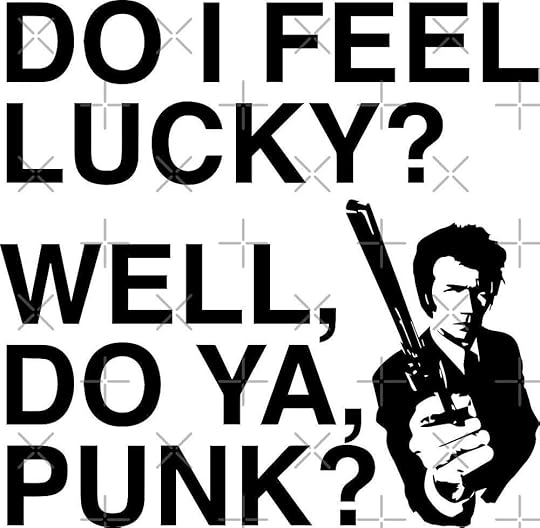
Lester Bangs (in his 1970 novella Drug Punk), Nick Tosche (in his 1970 Fusion article, “The Punk Muse”), along with Richard Meltzer and Greg Shaw were all throwing the terms around at that time, but it is Dave Marsh’s famous 1971 article in Creem magazine that is generally cited as the first occasion in which the terms ‘punk’ and ‘rock’ are seen side by side in print — although just months later Lenny Kaye used the term “punk rock” in the liner notes of his iconic Nuggets compilation of garage bands (thus also becoming the first to marry punk rock to the DIY ethos).
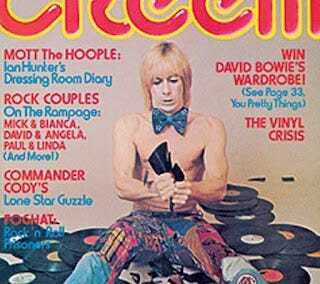
From these beginnings, it didn’t take long for the mainstream Rock media (with a little help from Malcolm McLaren) to cling on to and co-opt the term “punk rock” so that by the mid-1970s the term “punk” had gone from meaning someone who was an outsider, junkie, homosexual criminal, to someone who was a snotty, Pop Poseur in the mold of the Sex Pistols and the rest of their BritPunk ilk.
But this fabricated brand of Punk Rock really had very little to do with the original punk rock of the late 60s/early 70s. The fact that mainstream “music critics” were not hip to punk culture until the mid-70s doesn’t mean it didn’t exist prior to that. It did exist, although nowadays it has been given the dismissive label of “Proto-punk” in a posthumous manner intended to be used as a marketing device in much the same way the term “Classic Rock” was coined as a marketing device in the early 1980s when it first infiltrated the Mainstream Rock narrative (many years after most “Classic Rock” music had already been created).
Fallacy 2: Punk is just as relevant today as it was in the 70s and 80s.
Initially, punk rock was a distinct entity. In the early/mid-70s, there was nothing else like it around. It arose from the urban underbelly of Industrialized American wastelands in cities like Detroit and Cleveland and New York and Chicago and Boston. It embodied the nihilistic ethos of ‘informed’ and perceptive youth who were nonetheless sentenced to a lifetime of economic stagnation. The effect that those original punks had on Western Civilization is still felt today, but it no longer has the same relevance.

One of the many reasons for this is that punk birthed several cliches which have been co-opted in such a way as to transform punk rock’s original nihilistic energy into nothing but fabricated poses and sloganeering by everyone from “Activist Punks” like Jello Biafra, Ian MacKaye and Joe Strummer, to commercial sell-outs like the Dead Milkmen (a precursor of Greenday) to Nazi skinheads and even melodramatic made for tv punk bands like Mayhem (from a 1982 Quincy M.E. episode) and the band Pain (from a CHiP’s episode).
Despite this, it can be argued that Punk Rock still remains relevant in terms of an individual’s personal development, particularly to those who discover it during their teenage years. But in terms of the original spirit that spawned Punk (the danger of it, the nihilistic desperation of it, etc) that aspect has been so watered down through 40-plus years of manipulation by the corporate consumer culture that even today’s ‘underground’ punk just comes off as teenage poseury and a bit of a joke at best.
Fallacy 3: The Sex Pistols Never Mind the Bollocks and the Clash’s London Calling are the two most important punk albums ever made.
The long-playing album format has never translated very well in terms of punk rock. Punk was meant to be played live, at shows in basements, abandoned warehouses, garages, dive bars, or wherever the punks could find electricity. It wasn’t about making albums. Making albums was for the sell-outs. Punks were outsiders who didn’t give a frog’s fat penis about that stuff. At most, they would scrounge up a few bucks to cut a single, and then later with the rise of cassette tapes, they’d simply record something onto a tape and pass it around among other punks. Eventually though, yes, some punk bands made albums, bands like the Stooges, the New York Dolls, the Electric Eels, Rocket from the Tombs, the Ramones, Richard Hell, Patti Smith, the Dead Boys, The Saints, etc. But by the time that a band’s first album came out their short incubation period as an authentic punk band was near its end or actually past its sell-by date. The result is that there is very little original authentic punk captured in album form — which is exactly the way it should be.
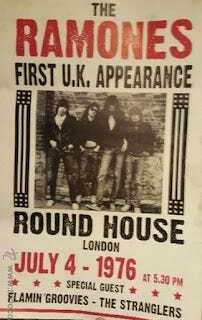
Fallacy 4: Hardcore punk is a response to economic hardship and government/corporate suppression.
Actually hardcore is a response to nearly the opposite. There was an economic recession in the late 1970s/early 1980s America, but it was generally the wealthy (wealthy compared to me at least) white suburban kids that were least affected by the economic downturn who are mostly responsible for hardcore. In part, these teens were simply bored with the carefree upper-middle class suburban lifestyle of safety and security that they were living, and through media images, they developed a romanticized envy for earlier authentic punks (who actually had struggled with hard economic conditions and a government/corporate repression). Wanting to be like the image they had of these earlier punks while also attempting to battle suburban boredom, these suburban teens often tried to eject drama into their lives through drug intake, especially amphetamines, which are somewhat responsible for the sped-up, angst-fueled, sonic quality of Hardcore music. Many of these suburban teens were also rebelling against not getting enough attention from mommy and daddy and therefore rejected everything their parents stood for. This contrarian impulse resulted in the fabricated image that hardcore became famous for; ripped t-shirts, safety pinned nostrils; spikey, multi-colored mohawks, and yes, even the cliche ‘tough-guy’ pose while flipping off the camera (which if you are one of those who are guilty of using this for your TikTok profile pic, then “LOL!”).
Fallacy 5: Punk rock is a valid way to express your individuality and rebellious nature.
Although this was once true, today punk rock is more about conformity. And it is more about image than it is about music. Whereas even as late as 1985 dressing like a punk and walking through your high school cafeteria was the quickest ticket to an ass-beating, today it is the quickest way to a nod of approval. There is no risk in being a punk today. There is no danger in it. It is not an expression of rebellion against the corporate masters, it is in fact an embrace of the corporate masters. Mike Diehl’s book My So-called Punk is an extensive exercise in trying to rationalize the corporate takeover of punk, but the fact of the matter remains that it is precisely because of Punk’s corporate sell-out that it has very little impact on society today beyond its entertainment value. So-called Punk bands of today draw more parallels to acts like N’sync or the Spice Girls than to original punk bands.
Fallacy 6: Bands that sounded and acted like punk rock in the late 60s and early 70s were actually “proto-punk”.
Punks, punk bands, and punk rockers were around in the early 70s and writers were writing about them in the US, yet the mainstream does not acknowledge these punks as punk. Instead, they refer to them as proto-punk. And why is that?
For starters, punk was so underground in the late 60s and early 70s, and so many other things were going on that punk didn’t really make a dent in the public consciousness until the Britpunk stuff exploded. And these original punks weren’t really the type to try and take credit for punk — because that kind of recognition didn’t really matter to them. Second of all, to start a movement you need a defining moment. The Britpunks had that moment when the Ramones did the July 4, 1976 show in London. Many of the defining players in the first wave Britpunk were at that show. Lastly, the punk bands in the US were spread out geographically from Detroit, Ohio, New York, etc, and therefore didn’t have the kind of sweltering critical mass that the Britpunks had.
Fallacy 7: The best way to really know what punk was like is to read books about it.
Like anything else, it is impossible to really know what punk was like unless you actually experienced it. I was just a whipper snapper living in small-town Central Illinois when hardcore began. Like most Ameriteens of the 80s, I was introduced to hardcore via the Repoman soundtrack and from mixed tapes recorded off the local college radio station. It wasn’t until the mid-80s that I experienced the punk scene in Chicago first-hand, but by that time hardcore’s heyday had already been and gone. I’d never been a joiner of groups/movements, etc, anyway, but the hardcore scene I experienced was nothing more than just another high school lunchroom cafeteria clique that was rather silly.
My limited experience provided a Johnny Come Lately understanding of punk, but it was enough to interest me in reading a procession of punk books that attempt to chronicle the true punk experience. Books like Please Kill Me: The Uncensored Oral History of Punk by Legs McNeil and American Hardcore: A Tribal History by Steven Blush attempt to chronicle punk history, but in the end, they are no substitute for the real experience.
*Punk was also Depression Era lingo (1930s) which meant a “young inexperienced boy who was admitted into the circus free of charge
©2006 Rockism 101. All Rights Reserved
[image error]July 25, 2023
did Bruce Springsteen piss on the flag?
The story begins in 1970 with American photographer Ethan Russell who, at 26 years of age, had already photographed The Rolling Stones’ Rock and Roll Circus performance as well as taking the photos for the cover of the Beatles’ Let It Be album. Russell was traveling with the Who during an ad hoc tour through England. One day, the merry band of travelers decided to take a pit stop in between gigs. Atop a barren hill, they were attracted to a brutal slab of concrete that resembled the monolith in Stanley Kubrick’s recent masterpiece 2001 Space Odyssey. The group pulled over and the members of the Who began aping around for a bit as Russell snapped photos. After a couple of shots, the Who’s guitarist Pete Townsend whipped out his tally whacker and started pissing on the slab. In a moment of inspiration, Russell directed the other Who members to do the same.
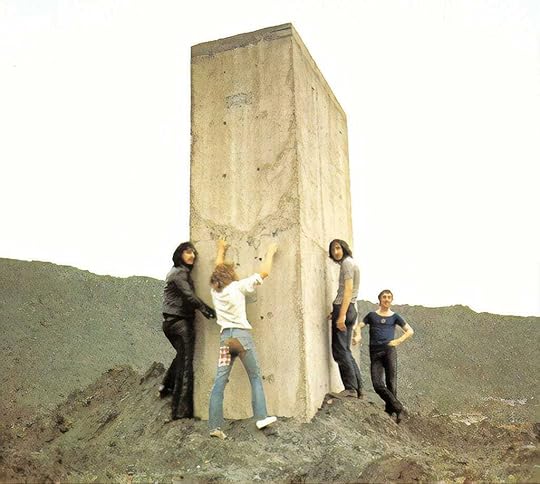
The result was the iconic photo that became the cover of the Who’s classic 1971 album, Who’s Next — an album that, one day 8 years later, was in heavy rotation on Bruce Springsteen’s playlist as Springsteen was in between gigs himself. The Boss casually pulled over to take a pit stop while on the road. This wasn’t some barren hills in England however, this was the remote, empty highways of Arizona, U.S.A. As Springsteen stopped in at a dusty gas station to relieve himself, he checked out the magazine rack where he spied a copy of Born on the 4th of July— a memoir written by small-town everyman Ron Kovic. Kovic’s memoir detailed his life growing up in the idealized mainstream dreamland of America. After high school, Kovic enlisted in the Marines — right during the Vietnam War — only to return home in a wheelchair, paralyzed from the waist down. Springsteen was fascinated by Kovic’s story and he quickly began working on the song that would become “Born in the U.S.A”.
Springsteen was still working on “Born in the U.S.A,” a few months later when he meet Kovic in person in Los Angeles. By this time, California’s former governor Ronald Reagan was elected president of the U.S.A. Reagan, known for his pro-war rhetoric, had played a significant role in creating mid-century American film and tv propaganda for what Dwight D, Eisenhower termed “the military-industrial complex”. Reagan’s rhetoric reminded Kovic and Springsteen of the rhetoric that led the USA into the conflict in Vietnam and the escalation of that conflict. To fight that “bull shit idea of America” they agreed to stage a benefit concert for Vietnam Vets. Springsteen decided the benefit concert should take place right in Reagan’s backyard at the Los Angeles Memorial Sports Arena.
Talking with Kovic and having the chance to meet veterans and hear their stories, Springsteen was struck by how many of them felt disillusioned by their government. Veteran after veteran expressed their loss of trust in the institutions they once believed in. One veteran flat out said that after he risked his life for his country, his county has done nothing but piss on him in return. Reagan’s pro-war rhetoric made Springsteen and Kovic worried that the same thing was happening all over again. Springsteen had to figure out a way to use these sentiments to complete his song Born in the USA (which is the title he eventually gave his next album as well).
As he continued to craft the song, Springsteen wanted to tap into that sentiment the veterans expressed that wasn’t being addressed in the mainstream media. It was something that he wanted to expose, but at the same time, he had witnessed other musicians like John Lennon pay the price for exposing their political ideas. To come right out and criticize the U.S. government would jeopardize Bruce’s hard-earned status as a working-class hero. Springsteen would have to be more strategic. He would have to pussy foot around the issues, make references, innuendos, and even hide the truth in plain sight, right under the listener’s nose. Not only in the song lyrics, but in the album cover as well.
Enter the financially troubled, former cocaine-addict Annie Leibovitz. Springsteen and Leibovitz had been in cahoots since Springsteen first rose to notoriety in the mainstream media. They had a lot in common. Not only were Springsteen and Leibovitz born just days apart, but they were also both iconic Baby boomer artists who had developed their liberal sensibilities during the turbulent culture wars of the 1960s and 1970s. As Springsteen developed his career through that period - honing his craft in the studio and on the road - Leibovitz spent those years developing her trademark portrait photographs which consisted of 1) bold primary colors and 2) her subjects positioned in bizarrely suggestive poses. Two famous examples of her work are the 1979 Bette Midler album cover that inspired the rock music film The Rose and the December 8, 1980 photo of a nude John Lennon curled around the fully clothed Yoko Ono.
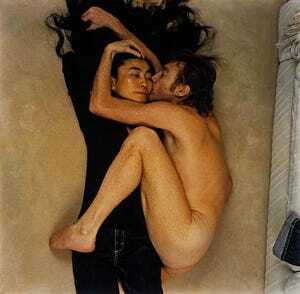
After private meetings in which Springsteen described “Born In The USA” and his goals for the album, a photo shoot was scheduled. Springsteen arrived at the shoot wearing his every man/working man outfit: a white t-shirt, tight-fitting blue jeans, and a red ball cap that belonged to friend and fellow New Jersey musician Lance Larson. Springsteen made sure to include the cap in the photo as a hidden tribute to Larson’s father’s who had passed away. But that wasn’t the only hidden message the cover would include. One stipulation that Springsteen insisted on for the photo shoot was the presence of a larger-than-life American flag as the backdrop for the photo. As the shoot began, a progressively palatable air of 70s subversive-ism was in the atmosphere. The two artists talked more of the album, its themes, and their shared left-wing passions until finally, late in the shoot — similar to Who’s impromptu shoot for Who’s Next, Springsteen turned his back to the camera and toward the large wall-sized flag. Like Michael Jackson grabbing his crotch in a music video, Springsteen grabbed his own tally wacker as though he was pissing on the flag. Leibovitz snapped the photo and knew at once that the Boss had his album cover.

The rest is history, albeit, ironic history, as the song and album that Springsteen created to point out the harm that bull shit rah-rah mainstream patriotism caused was actually used by Ronald Reagan to perpetuate more bull shit rah-rah mainstream patriotism. Reagan cited Springsteen and used “Born in the USA” on the campaign trail in 1984. Former New Jersey governor Chris Christie said: “Really, it’s a defiant song about ‘I was born in the USA, and I deserve better than what I’m getting.’ I think plenty of people didn’t get what it was about, including the president of the United States.”
[image error]why did Bruce Springsteen piss on the flag?
The story begins in 1970 with American photographer Ethan Russell who, at 26 years of age, had already photographed The Rolling Stones’ Rock and Roll Circus performance as well as taking the photos for the cover of the Beatles’ Let It Be album. Russell was traveling with the Who during an ad hoc tour through England. One day, the merry band of travelers decided to take a pit stop in between gigs. Atop a barren hill, they were attracted to a brutal slab of concrete that resembled the monolith in Stanley Kubrick’s recent masterpiece 2001 Space Odyssey. The group pulled over and the members of the Who began aping around for a bit as Russell snapped photos. After a couple of shots, the Who’s guitarist Pete Townsend whipped out his tally whacker and started pissing on the slab. In a moment of inspiration, Russell directed the other Who members to do the same.

The result was the iconic photo that became the cover of the Who’s classic 1971 album, Who’s Next — an album that, one day 8 years later, was in heavy rotation on Bruce Springsteen’s playlist as Springsteen was in between gigs himself. The Boss casually pulled over to take a pit stop while on the road. This wasn’t some barren hills in England however, this was the remote, empty highways of Arizona, U.S.A. As Springsteen stopped in at a dusty gas station to relieve himself, he checked out the magazine rack where he spied a copy of Born on the 4th of July— a memoir written by small-town everyman Ron Kovic. Kovic’s memoir detailed his life growing up in the idealized mainstream dreamland of America. After high school, Kovic enlisted in the Marines — right during the Vietnam War — only to return home in a wheelchair, paralyzed from the waist down. Springsteen was fascinated by Kovic’s story and he quickly began working on the song that would become “Born in the U.S.A”.
Springsteen was still working on “Born in the U.S.A,” a few months later when he meet Kovic in person in Los Angeles. By this time, California’s former governor Ronald Reagan was elected president of the U.S.A. Reagan, known for his pro-war rhetoric, had played a significant role in creating mid-century American film and tv propaganda for what Dwight D, Eisenhower termed “the military-industrial complex”. Reagan’s rhetoric reminded Kovic and Springsteen of the rhetoric that led the USA into the conflict in Vietnam and the escalation of that conflict. To fight that “bull shit idea of America” they agreed to stage a benefit concert for Vietnam Vets. Springsteen decided the benefit concert should take place right in Reagan’s backyard at the Los Angeles Memorial Sports Arena.
Talking with Kovic and having the chance to meet veterans and hear their stories, Springsteen was struck by how many of them felt disillusioned by their government. Veteran after veteran expressed their loss of trust in the institutions they once believed in. One veteran flat out said that after he risked his life for his country, his county has done nothing but piss on him in return. Reagan’s pro-war rhetoric made Springsteen and Kovic worried that the same thing was happening all over again. Springsteen had to figure out a way to use these sentiments to complete his song Born in the USA (which is the title he eventually gave his next album as well).
As he continued to craft the song, Springsteen wanted to tap into that sentiment the veterans expressed that wasn’t being addressed in the mainstream media. It was something that he wanted to expose, but at the same time, he had witnessed other musicians like John Lennon pay the price for exposing their political ideas. To come right out and criticize the U.S. government would jeopardize Bruce’s hard-earned status as a working-class hero. Springsteen would have to be more strategic. He would have to pussy foot around the issues, make references, innuendos, and even hide the truth in plain sight, right under the listener’s nose. Not only in the song lyrics, but in the album cover as well.
Enter the financially troubled, former cocaine-addict Annie Leibovitz. Springsteen and Leibovitz had been in cahoots since Springsteen first rose to notoriety in the mainstream media. They had a lot in common. Not only were Springsteen and Leibovitz born just days apart, but they were also both iconic Jewish Baby boomer artists who had developed their liberal sensibilities during the turbulent culture wars of the 1960s and 1970s. Although both were Jewish, neither one was a practicing Jew. In fact, they both shied from the subject matter whenever it was brought up. As Springsteen developed his career honing his craft in the studio and on the road, Leibovitz spent her years developing her trademark portrait photographs that consisted of 1) bold primary colors and 2) her subjects positioned in bizarrely suggestive poses. Two famous examples of her work are the 1979 Bette Midler album cover that inspired the rock music film The Rose and the December 8, 1980 photo of a nude John Lennon curled around the fully clothed Yoko Ono.

After private meetings in which Springsteen described “Born In The USA” and his goals for the album, a photo shoot was scheduled. Springsteen arrived at the shoot wearing his every man/working man outfit: a white t-shirt, tight-fitting blue jeans, and a red ball cap that belonged to friend and fellow New Jersey musician Lance Larson (the cap was gifted to him by a friend, Lance Larson after his father passed away. Springsteen used the cap as a tribute, hoping to keep Larson’s father’s memory alive through the album). The one stipulation Springsteen insisted on for the photo shoot was the presence of a larger-than-life American flag as the backdrop for the photo. As the shoot began, a progressively palatable air of 70s subversive-ism was in the atmosphere. The two artists talked more of the album, its themes, and their shared left-wing passions until finally, late in the shoot — similar to Who’s impromptu shoot for Who’s Next, Springsteen turned his back to the camera and toward the large wall-sized flag. Like Michael Jackson grabbing his crotch in a music video, Springsteen grabbed his own tally wacker as though he was pissing on the flag. Leibovitz snapped the photo and knew at once that the Boss had his album cover.

The rest is history, albeit, ironic history, as the song and album that Springsteen created to point out the harm that bull shit rah-rah mainstream patriotism caused was actually used by Ronald Reagan to perpetuate more bull shit rah-rah mainstream patriotism as Reagan evoked Springsteen and use “Born In The USA” on the campaign trail in 1984. Former New Jersey governor Chris Christie said: “Really, it’s a defiant song about ‘I was born in the USA, and I deserve better than what I’m getting.’ I think plenty of people didn’t get what it was about, including the president of the United States.”
[image error]July 17, 2023
The Worst Mustaches in Rock History
The mustache plays an important role in Rock History. In fact, the mustache was so integral to mid-1970s Guitar Rock that the genre was at times referred to as Mustache Rock (mostly just by hipsters though). When done right the mustache serves a purpose that goes far beyond simply keeping the upper lip warm. The mustache is able to make a statement. What kind of statement, you ask? How about this kind of statement:

…or this:
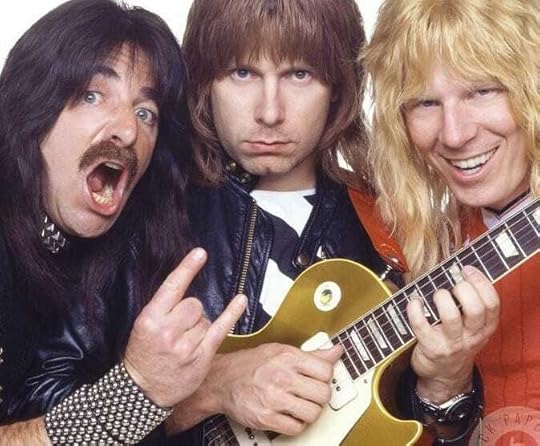
Or even this kind of statement (known as the French Tickler):

… Or this (one Ming AND one French Tickler all in ONE band):
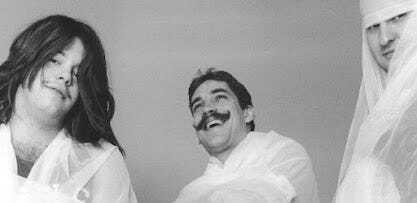
But inevitably there would be “those” who got it all wrong. Here are some of “those” and their sorted stories:
Exhibit A:
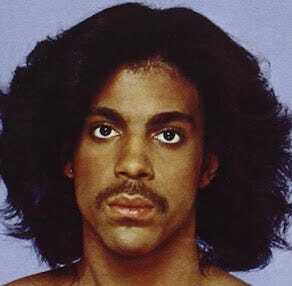

Prince played guitar leads that would have made any lead axe man in any 80s Hair Metal band proud. He also was very short, and short men naturally have a Napoleon complex and therefore must compensate by displaying their manhood in the form of facial hair. His first attempt was the ever-famous ‘chocolate milk mustache’ or just simply the ‘chocolate milk’. This didn’t last long, and by the early ’80s, when Prince inherited the wardrobe from The 1976 Sgt. Pepper’s Lonely Hearts Club Band movie, he streamlined his mustache into an elegant, pencil-thin, Little Richard-esque piece which began referring to itself as the “mustache formerly known as the Chocolate Milk”.
Exhibit B:

This one really needs no explanation. The classic “porno stache” that was all the rage among every Debbie Does Dallas porno-star-wannabe of the late 70s. Perhaps the only time in the history of Western civilization that this ‘stache could have been taken seriously was the late 70s/early 80s. But when sported along with the ‘Brady Bunch fancy-boy perm’ and ‘jazz hands’, you have a walking, breathing, living douchebag.
Exhibit C:

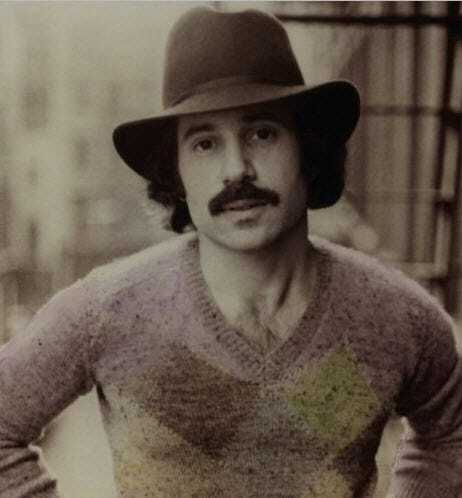
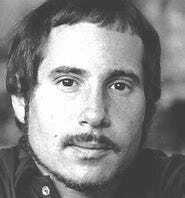
Q: What do you do when you are an internationally famous singer-songwriter at the peak of your skill living during the long-hair 70s and are rapidly finding 50 ways to lose your hairline? As the nation turns its lonely eyes toward you, do you?
A. Grow a mustache.
B. Try hiding the baldness by wearing hoodies, cowboy hats or ball caps.
C. Invest in hair plugs.
Well, at first you are so desperate to see hair growing somewhere on your head that you embrace the mustache. Simon decides to go with the “fluffer”. Not quite as blatant as the Porno ‘stache, but equally ridiculous. But by the late/mid-’80s, Simon saw the error of his ways and axed the ‘stache, got a hair transplant, then married Edie Brickell (religion, is a smile on a dog…).
Exhibit D:

Known as the she-ming or the FeMing, the female “Ming” is one of the hardest ‘staches to pull off (particularly for non-Hispanic womyn). But if anyone could pull it off, you would think it would have been the punk pioneer Patti Smith. Unfortunately, after rubbing our noses into her hairy, unkempt armpits all throughout the 70s, most fans viewed her she-ming as a bit too much…follicle overkill. As we all know, the reason woman rockers grow ‘staches or beards or let their armpit hair go, is to give a visual ‘’tease” to male audience members, as if to say, “Look, this is basically what the hair of my vagina is gonna look like — are you turned on?”
Sometimes this works, sometimes it doesn’t.
Exhibit E:
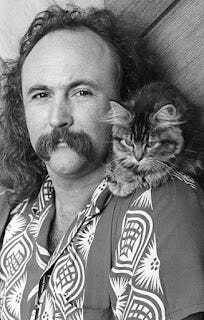
 hair of the dawg
hair of the dawgKnown as the ‘walrus’ (or sometimes referred to as the Wilfred Brimley) this ‘stashe is uncommonly popular among recovering drug addicts whose best years are obviously a distant memory in the rearview mirror. This mustache says “I’m the kind of guy you could smoke a doobie with and getting a little ‘weird’ with back in the day.” It was first popularized after Dennis Hopper famously unveiled it in his portrayal of a free-wheelin hippie sidekick in his film masterpiece Easy Rider.
For more writing by Ed Wagemann click here: Ed Wagemann
©2006 Rockism 101. All Rights Reserved
[image error]July 10, 2023
The BestWorst Hairdos in SynthPop History
notes from the 80s underground
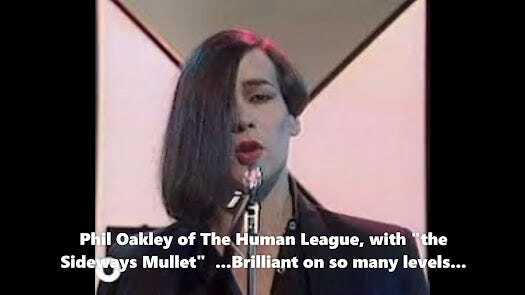 THE SIDEWAYS MULLET
THE SIDEWAYS MULLET THE SEAGULL
THE SEAGULL THE SKYWALKER
THE SKYWALKER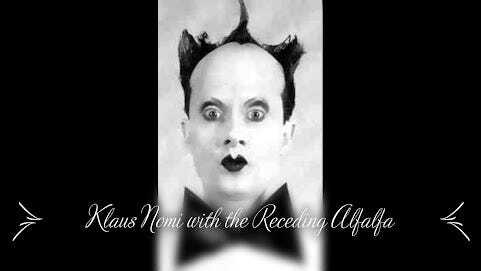 THE RECEDING ALFALFA
THE RECEDING ALFALFA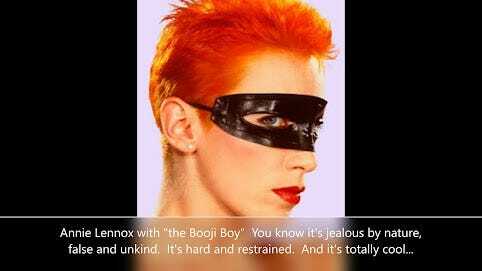 THE BOOJI
THE BOOJI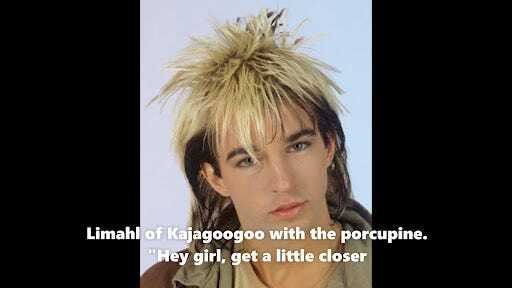 THE PORCUPINE
THE PORCUPINE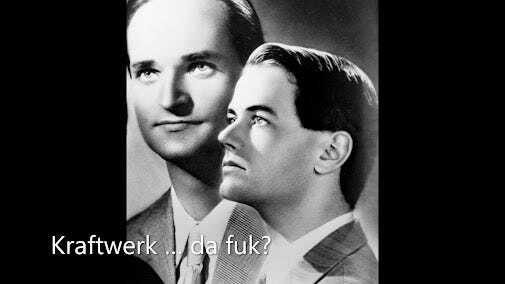
©2006 Rockism101. All Rights Reserved
[image error]June 20, 2023
The Lost Golden Age of Groupies
I didn’t really know what a groupie was until I was about 14 years old. I had seen amateur and second-rate groupies at local fairgrounds and other places Rock bands performed, but I didn’t know what they really were until one day I read a magazine article that detailed the infamous Led Zeppelin episode in which John Bonham ‘made love’ to a groupie using a trout (or some kind of fish). After that, I became kind of fascinated with the entire groupie culture, and I soon came to realize that the groupie phenomenon was an instrumental part of Rock, going back to the beginning days when Elvis Presley had his manager line girls up outside his hotel room for him to pick and choose from. So I began to study groupie culture and the groupie phenomenon. Here’s my report:
Songs about Groupies:
By the mid-60s, in many ways, the Groupie factor had become a force that was shaping the Classic Rock landscape. The key was that, although there were some groupies who were famous within Rock circles at that time, for the most part, groupies were NOT famous. They were almost famous. This was important, because it meant that they would have to fuck and suck their way through managers, promoters and roadies to get to their desired rock star. Occasionally they would be rewarded with a song written about them:
~ 200 Motels or Our Bizarre Relationship by Frank Zappa.
~ American Band by Grand Funk Railroad who paid homage to a wild, almost famous groupie from little rock Arkansas named Sweet, Sweet Connie (who was also a school teacher).
~ The Beatles’ Polythene Pam and She came in through the Bathroom window which was a tip of the hat to a band of groupies called the Apple Scruffs who stood post outside the Beatles recording studio every day.
~ the Rolling Stones song Rip This Joint there is a reference to the ‘butter queen’ — a groupie from Dallas named Barbara Cope who was well known for using butter as a lubricant when servicing her Rock stars.
~Kiss wrote a song called Plaster Caster that made reference to Cynthia and Diane Plaster Caster, who were possibly the first groupies to actually become semi-famous. The Plaster Casters had a niche. They traveled to various rock venues carrying around a small briefcase that held the tools with which they created plaster of Paris duplications of the Rock god’s penises. They would finagle their way into the backstages and hotels, use their powers of persuasion to get the rock star naked, and then make a molding of that Rock star’s famous penis. Their collection eventually contained casts of Jimi Hendrix, Jim Morrison, Noel Redding, Eric Burdon, Peter Shelly, Jello Biafra, Richard Lloyd of Television, and a cast of dozens.
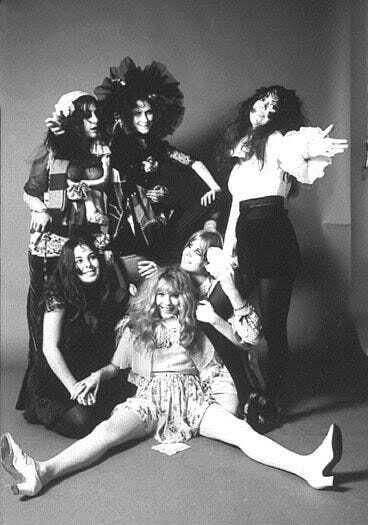
GTOs:
The first semi-famous band of groupies was the Frank Zappa-inspired GTO’s (which has been said to stand for Girls Together Outrageously, Girls Together Occasionally, Girls Together Only, or Girls Together Often). Their group included Miss Christine, Suzi Cream Cheese, Miss Lucy, Miss Mercy, Sparky, Cinderella, Miss Sandra as well as probably the most prolific groupie of all-time: Pamela Des Barres. Miss Pamela had personified the free-spirited, free-lovin’ ’60s groupie. She managed to become involved with many of the alltime biggest rock stars of the Classic era including Jimmy Page, Mick Jagger, Jim Morrison, Nick St. Nicholas of Steppenwolf, Noel Redding of the Jimi Hendrix Experience, Waylon Jennings and the Who’s Keith Moon.
THE SUPER GROUPIE
In the 60s, most groupies were harmless hippie chicks but by the 70’s groupies like Des Barres were setting the foundations for what would become the Super Groupie. By the 70s, the role of a groupie had ev70solved into being a necessary rite of passage for any girl who wanted to eventually enter into a relationship or possibly even get married to a rock star. One legendary super groupie who worked this angle was Bebe Buell. Bebe dated Todd Rundgren, Mick Jagger, Iggy Pop, David Bowie, Jimmy Page, Steven Tyler (whom she had a kid with — actress Liv Tyler), Rod Stewart, and Elvis Costello (who she claimed had gotten her pregnant and had written a number of songs about her — which Costello denies). Buell also claimed that Prince had written “Little Red Corvette” about her in which Prince sings “Bebe, you’re much too fast”.
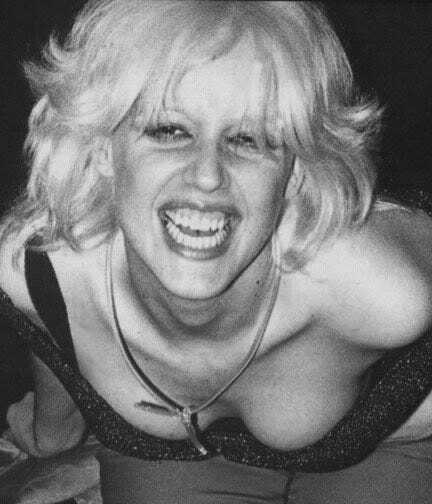
Another super-groupie was Cyrinda Foxe-Tyler who worked with Andy Warhol and was best know for her role in “Andy Warhol’s Bad.” She also had an affair with David Bowie, got pregnant and had an abortion then worked with David Bowie as a Marilyn Monroe look-alike, appearing in his “The Jean Genie” video before marrying David Johansen, frontman for the New York Dolls, in 1977. Cyrinda then bounced off of Johansen a year later and landed on Steven Tyler. Her last marriage was to musician Keith Waa which lasted 3 days.
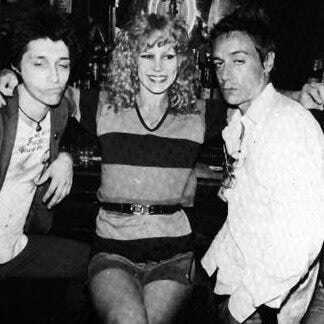
The list of Super groupies of the 70’s is a long one, there is Sable Starr, whose sister Corel was also an important groupie. Sable Starr had gotten into the groupie trade at the age of 15 when she met up with the New York Doll’s Johnny Thunders. Later she hooked up with Jimmy Page, Marc Bolan, and Iggy Pop.
Then there was Angie Bowie who married David Bowie in March 1970. Angie was as well known for sexual conquests of female as she was for her sexual conquests of males, including Cyrinda Foxe-Tyler, Marianne Faithfull and Cherry Vanilla.
Cherry Vanilla herself was also part-groupie. She had been one of the first DJs of the late 60’s club scene. She also worked with, Andy Warhol in various plays until she met David & Angie Bowie and began an affair with the both of them. Later she was the original singer for the Police and she also helped Debbie Harry get started. Her book Pop Tarts is considered to be the prototype for Madonna’s book Sex.
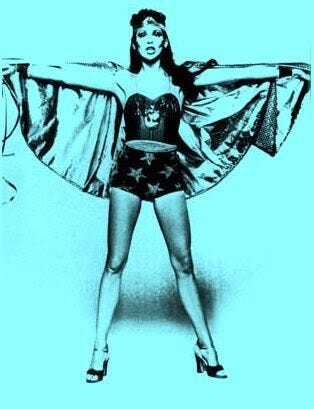
These SuperGroupies of the 70s all set the stage for the drastic changes in the role of the groupie that transpired in the 1980s. In the 80’s, aided by Mtv, it had become possible for the Rock groupie to go from being ‘almost famous’ to being just as famous as the rock stars they were humping. (Winona Ryder, Pamela Anderson, Kate Hudson). The first Super Groupie to actually attain this kind of breakthrough fame was the legendary Tawny Kitane. Kitane first came to fame as the spread-leg video vixen and girlfriend of Whitesnake’s lead singer David Coverdale. Coverdale famously gave Kitane a part in his music video. This led to a lackluster career in the movie industry for Kitane before she ended up marrying major league baseball pitcher Chuck Finley — a relationship that ended with Kitane being arrested and charged with spousal abuse and battery after she allegedly kicked and twisted the ear of Finley during an altercation where she used her fists and boots to beat the snot out of him. She then accused him of being a boozer, a pot smoker, and a steroid user to the press. I guess this is what happens when sports stars trying to enter the mysterious and dangerous world of Rock…

THE EVIL GROUPIE
Occasionally a groupie would come along who seemed to be like pure poison. They somehow become responsible (or at least blamed) for either ruining a Rocksters career, breaking up the band, or causing him to get hooked on drugs and every other bad thing that happens in his life. The three most famous evil groupies are: Courtney Love, Nancy Spungeon, and Yoko Ono.
Comment Challenge: Name a popular song about groupies
[image error]The Golden Age of Groupies
I didn’t really know what a groupie was until I was about 14 years old. I had seen amateur and second-rate groupies at local fairgrounds and other places Rock bands performed, but I didn’t know what they really were until one day I read a magazine article that detailed the infamous Led Zeppelin episode in which John Bonham ‘made love’ to a groupie using a trout (or some kind of fish). After that, I became kind of fascinated with the entire groupie culture, and I soon came to realize that the groupie phenomenon was an instrumental part of Rock, going back to the beginning days when Elvis Presley had his manager line girls up outside his hotel room for him to pick and choose from. So I began to study groupie culture and the groupie phenomenon. Here’s my report:
Songs about Groupies:
By the mid-60s, in many ways, the Groupie factor had become a force that was shaping the Classic Rock landscape. The key was that, although there were some groupies who were famous within Rock circles at that time, for the most part, groupies were NOT famous. They were almost famous. This was important, because it meant that they would have to fuck and suck their way through managers, promoters and roadies to get to their desired rock star. Occasionally they would be rewarded with a song written about them:
~ 200 Motels or Our Bizarre Relationship by Frank Zappa.
~ American Band by Grand Funk Railroad who paid homage to a wild, almost famous groupie from little rock Arkansas named Sweet, Sweet Connie (who was also a school teacher).
~ The Beatles’ Polythene Pam and She came in through the Bathroom window which was a tip of the hat to a band of groupies called the Apple Scruffs who stood post outside the Beatles recording studio every day.
~ the Rolling Stones song Rip This Joint there is a reference to the ‘butter queen’ — a groupie from Dallas named Barbara Cope who was well known for using butter as a lubricant when servicing her Rock stars.
~Kiss wrote a song called Plaster Caster that made reference to Cynthia and Diane Plaster Caster, who were possibly the first groupies to actually become semi-famous. The Plaster Casters had a niche. They traveled to various rock venues carrying around a small briefcase that held the tools with which they created plaster of Paris duplications of the Rock god’s penises. They would finagle their way into the backstages and hotels, use their powers of persuasion to get the rock star naked, and then make a molding of that Rock star’s famous penis. Their collection eventually contained casts of Jimi Hendrix, Jim Morrison, Noel Redding, Eric Burdon, Peter Shelly, Jello Biafra, Richard Lloyd of Television, and a cast of dozens.

GTOs:
The first semi-famous band of groupies was the Frank Zappa-inspired GTO’s (which has been said to stand for Girls Together Outrageously, Girls Together Occasionally, Girls Together Only, or Girls Together Often). Their group included Miss Christine, Suzi Cream Cheese, Miss Lucy, Miss Mercy, Sparky, Cinderella, Miss Sandra as well as probably the most prolific groupie of all-time: Pamela Des Barres. Miss Pamela had personified the free-spirited, free-lovin’ ’60s groupie. She managed to become involved with many of the alltime biggest rock stars of the Classic era including Jimmy Page, Mick Jagger, Jim Morrison, Nick St. Nicholas of Steppenwolf, Noel Redding of the Jimi Hendrix Experience, Waylon Jennings and the Who’s Keith Moon.
THE SUPER GROUPIE
In the 60s, most groupies were harmless hippie chicks but by the 70’s groupies like Des Barres were setting the foundations for what would become the Super Groupie. By the 70s, the role of a groupie had ev70solved into being a necessary rite of passage for any girl who wanted to eventually enter into a relationship or possibly even get married to a rock star. One legendary super groupie who worked this angle was Bebe Buell. Bebe dated Todd Rundgren, Mick Jagger, Iggy Pop, David Bowie, Jimmy Page, Steven Tyler (whom she had a kid with — actress Liv Tyler), Rod Stewart, and Elvis Costello (who she claimed had gotten her pregnant and had written a number of songs about her — which Costello denies). Buell also claimed that Prince had written “Little Red Corvette” about her in which Prince sings “Bebe, you’re much too fast”.

Another super-groupie was Cyrinda Foxe-Tyler who worked with Andy Warhol and was best know for her role in “Andy Warhol’s Bad.” She also had an affair with David Bowie, got pregnant and had an abortion then worked with David Bowie as a Marilyn Monroe look-alike, appearing in his “The Jean Genie” video before marrying David Johansen, frontman for the New York Dolls, in 1977. Cyrinda then bounced off of Johansen a year later and landed on Steven Tyler. Her last marriage was to musician Keith Waa which lasted 3 days.

The list of Super groupies of the 70’s is a long one, there is Sable Starr, whose sister Corel was also an important groupie. Sable Starr had gotten into the groupie trade at the age of 15 when she met up with the New York Doll’s Johnny Thunders. Later she hooked up with Jimmy Page, Marc Bolan, and Iggy Pop.
Then there was Angie Bowie who married David Bowie in March 1970. Angie was as well known for sexual conquests of female as she was for her sexual conquests of males, including Cyrinda Foxe-Tyler, Marianne Faithfull and Cherry Vanilla.
Cherry Vanilla herself was also part-groupie. She had been one of the first DJs of the late 60’s club scene. She also worked with, Andy Warhol in various plays until she met David & Angie Bowie and began an affair with the both of them. Later she was the original singer for the Police and she also helped Debbie Harry get started. Her book Pop Tarts is considered to be the prototype for Madonna’s book Sex.

These SuperGroupies of the 70s all set the stage for the drastic changes in the role of the groupie that transpired in the 1980s. In the 80’s, aided by Mtv, it had become possible for the Rock groupie to go from being ‘almost famous’ to being just as famous as the rock stars they were humping. (Winona Ryder, Pamela Anderson, Kate Hudson). The first Super Groupie to actually attain this kind of breakthrough fame was the legendary Tawny Kitane. Kitane first came to fame as the spread-leg video vixen and girlfriend of Whitesnake’s lead singer David Coverdale. Coverdale famously gave Kitane a part in his music video. This led to a lackluster career in the movie industry for Kitane before she ended up marrying major league baseball pitcher Chuck Finley — a relationship that ended with Kitane being arrested and charged with spousal abuse and battery after she allegedly kicked and twisted the ear of Finley during an altercation where she used her fists and boots to beat the snot out of him. She then accused him of being a boozer, a pot smoker, and a steroid user to the press. I guess this is what happens when sports stars trying to enter the mysterious and dangerous world of Rock…

THE EVIL GROUPIE
Occasionally a groupie would come along who seemed to be like pure poison. They somehow become responsible (or at least blamed) for either ruining a Rocksters career, breaking up the band, or causing him to get hooked on drugs and every other bad thing that happens in his life. The three most famous evil groupies are: Courtney Love, Nancy Spungeon, and Yoko Ono.
Comment Challenge: Name a popular song about groupies
[image error]April 7, 2023
did r.e.m. create the modern indie rock album?
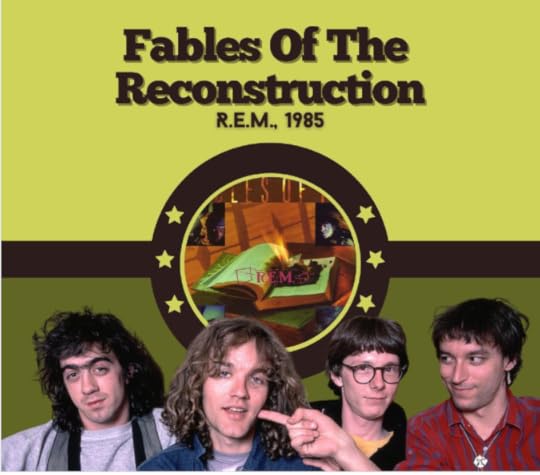
February 1985. R.E.M. gathered at Jim Hawkins Studio in their hometown of Athens Georgia. In about four hours they finished the 14-song demo that would serve as the starting point for their next full album. Joe Boyd, who was picked by R.E.M. guitarist Peter Buck to produce the album, was sitting in the cramped but comfortable control room watching, listening. Boyd was a Harvard graduate who had gotten the music production bug in the mid-1960s. He was a direct connection to the old weird America folk rock music that R.E.M. was often compared to. In fact, Boyd had been the soundman at the infamous 1965 Newport Folk Festival where Bob Dylan performed his first-ever live electric set (the one where Dylan was booed by the audience). Now, twenty years later, as a 42-year-old independent music producer with his own fledgling record label, Boyd found himself in Athens watching the most popular college radio band in the United States. He was fascinated with what he saw and heard. R.E.M, was the past, present and the future of Rock, all in one band.
Boyd’s first bit of business was to convince R.E.M. to get out from under the watchful eye of their record company and venture across the pond to his studio in England. Peter Buck was onboard, and the other three band members quickly followed. Less than one week later Boyd, Berry, Buck, Mills and Stipes landed in a dreary, late winter, late-afternoon North London — not exactly the time and place that comes to mind when you think of old weird American folk rock. Nonetheless, R.E.M. entered Livingston Studio — a former church hall — to begin recording their third full-length album, Fables of the Reconstruction (alternatively referred to as Reconstruction of the Fables). A new genre was about to be born.
Rock journalists described R.E.M’s sound as new wave folk rock or jangly power-pop (Peter Buck’s guitar work was often compared to that of the Byrds), but these pundits also believed that R.E.M. had taken the college rock “little train that could” trail as far as it could go. It was a dead end to the middle of nowhere, and the members of R.E.M. understood this. They needed to head in a new direction. The most obvious trail would be to board a connecting train at their next stop and head straight down the shiny, happy pop music path into the commercial top 40/Mtv landscape of the mid-1980s. Peter Buck wasn’t thrilled with that prospect though, which is why he sought the input of Joe Boyd. Joe Boyd had produced non-commercial musical originators like Syd Barrett, Richard Thompson, Nick Drake. Boyd knew of an alternative route for the band and he entered Livingston studio like a train conductor enters a locomotive, gearing up to switch tracks for a detour. He prepared for a journey to a different route — a route in which R.E.M. could avoid that college rock dead end while also venturing away from that fatal, boring stop into Top 40 Commercialand.
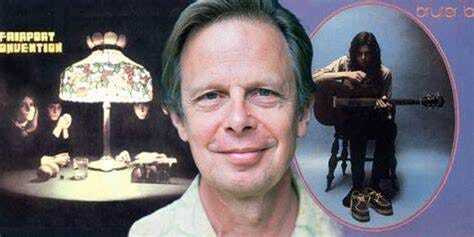 Joe Boyd
Joe Boyd1985 was not an ideal time for the creation of a folk-rock masterpiece (or an album that would consequently be the genesis of an entirely new genre: Indie Rock). 1985 was the height of hair metal and Mtv poser bands and synthetic drums and voice effects and… well, you know — that entire era of shit-sounding production. The only way to hear authentic Rock in 1985 was to A) buy the corporate-sponsored repackaging of the 1960s/1970s hippy-era Rock albums that were experiencing a renaissance spawned by the recent popularization of a new industry technology called compact discs. B) cruise the used record stores, thrift shops, estate/yard sales for original albums. Or C) seek music by college rock or underground bands (the Replacements, Sonic Youth, Husker Du, Throwing Muses, the Pixies, and R.E.M).
But this last option wasn’t easy. And it wasn’t sustainable. For one thing, the record industry was sniffing around for these underground bands and pressuring them into selling out. You might think, “What’s so terrible about selling out?” After all, since the dawn of the Beatles, millions of kids across Western civilization had formed Rock bands with the dream of fame and fortune. But by the mid to late 1970s that dream had been corrupted by corporate forces and an alternative dream emerged. It was the underground Rock band dream, a dream that preferred a record store-geek kinda fame — the kinda fame where the critics and music junkies cherished your brilliant records, while mainstream boobs barely knew any of your songs. It was a Big Star fame, a Modern Lovers fame, a MinuteMen fame, a Velvet Underground fame, a Joy Division fame, a Pere Ubu fame, a fame that the Replacements were toying with… and if R.E.M. would have never recorded another album after Fables of the Reconstruction, it would have been an R.E.M. fame as well.
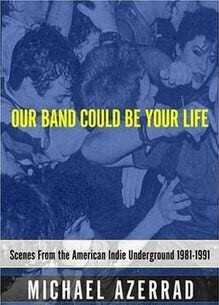
So why isn’t one of these bands that came before R.E.M. considered to have the first modern Indie Rock album? The answer is the timing. Because of the environment that the corporate record industry had created by that time (which included finagling underground bands into selling out), 1985 is about as far back as you can go if you want to talk about modern Indie Rock. By Revolution Summer (1985), American underground bands had created a loose network that was made up of their own venues for music, their own zines, their own flyers, their own independent labels, their own college radio shows, etc. This network started completely outside of, and at odds with, the corporate record industry influence. And since the goal of any corporate industry is total corporatization — especially in 1985 — this small underground niche was something that the American corporate record industry figured they should exploit and control. Corporations basically controlled every aspect of Rock music. Corporations controlled the record companies, they controlled booking agencies, the music venues, the radio stations. They controlled distribution, publishing, the merchandising — anything related to making money from Rock music was under the corporate influence. And the corporations controlled marketing, which (*activate Dewy Finn voice) included a little things called Mtv… and Rolling Stone magazine… and the soon-to-be Rock and Roll Hall of Fame, etc. All of which meant that making a living from a small independent label was simply not viable by 1985.
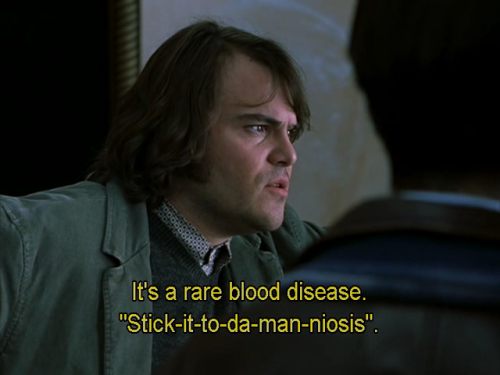
So was REM actually even an Indie band? Were they the rare exception that was immune to corporate control? Or were they just another pop band on the corporate assembly line?
For the making of Fables, the answer is “Yes, they were an indie band.” Which probably requires some explaining. In 1981 R.E.M. released its first single “Radio Free Europe” on the local independent label Hib-Tone. Hib-Tone could not keep up with the demand for the single and, after turning down major label RCA Records, R.E.M. signed with IRS Records (which was distributed under Herb Albert’s brainchild A&M Records at the time) in 1983. R.E.M had an “in” with I.R.S. via Ian Copeland who ran a booking agency in Macon, Georgia where R.E.M drummer Bill Berry worked. Ian’s brother Miles was I.R.S’s founder. I.R.S. had success after signing the band that the other Copeland brother, Stewart, played drums for — that being the post-punk poster boys the Police. Despite I.R.S’s success with the Police (and the Go-Gos) — it was an independent label, not much different from the Indie labels of the 1990s. They certainly were not in the same league as the major record label companies, and they certainly were artist-friendly and had a genuinely hand-to-hand working relationship with their bands. The problem was that shortly before R.E.M began recording Fables of the Reconstruction, I.R.S. changed from A&M Records to MCA, and MCA made it known that they were not happy with the lack of commercial success of R.E.M’s first two albums. This led to a contentious relationship between MCA and R.E.M. with I.R.S. in the middle. Which brings us to late winter, February 1985, as pressure from MCA was escalating, R.E.M. found themselves at a crossroads, looking out in all directions at this unsettling, murky, and menacing music industry landscape. Stipe, Buck, Mills, and Berry were very much a band that believed in their unique artistic vision. They were still young men who had not yet sold their souls. So against I.R.S’s wishes, R.E.M. flew off to London with Joe Boyd and decided to pursue their creative vision. And it just so happened that because of the timing and the circumstances involved, this put them in position to create the first Indie Rock album of the modern era. But, this is only part of the reason that Fables is the first modern Indie Rock album.
If Fables had been like R.E.M’s first three releases (Chronic Town EP, Murmur, or Reckoning) it would have been just another collection of very good to great songs. R.E.M. could have done that very easily, but they were evolving, both musically and lyrically (thematically). Fables didn’t just string a bunch of great songs together, it introduced a new aesthetic — an aesthetic that rose straight from R.E.M’s artistic vision and innovative sonic qualities. And it was the aesthetic that would have a huge influence on every other Indie Rock album to follow. Up to this point in Rock history there hadn’t really been an album that sounded like Fables. Fables was so unique and foreign to fans and critics’ ears, that people simply did not know how to describe it. By default, folks categorized it as a concept album. The case for categorizing Fables as a concept album is obvious. Fables has continuity in its theme and continuity in its sound and the way these two things meld together causes you to listen to the album on a holistic basis. It requires you to enter a listening experience that creates a totally different mind-space in a very unique way.
First of all, the unique sonic vibe weaved throughout Fables is very recognizable in the deep murky, gooey sound that Joe Boyd was able to pull from deep within the grooves and synergy that was created in the interplay that flowed from Berry, Buck, Mills and Stipes as they journeyed into deep, rich communal musical pockets during the recording sessions of Fables. If you’ve ever been in a band, maybe you have experienced this magic before. It’s like telepathy. It involves chemistry, it involves existing in a vibe, it involves time and space and completely zoning out of everything else and just digging the transcendental moment of the music. There’s an undeniable, extra-sensory cosmic level that some bands meld into. R.E.M had reached that level before, but they were more evolved now, more mature, tighter. Boyd was able to capture that alchemy from deep inside the DNA of the grooves and the riffs that R.E.M. had tapped into. Distinct to R.E.M’s magical goo was their counter-intuitive instinct of turning their sound down. The lead vocals on Fables were somewhat back in the mix (especially compared to most recorded music of that era). The same goes for Buck’s guitars and Berry’s drums. By putting all the instrumentation (including the bass) on an equal level, it made input by all contributors equal, and it allowed R.E.M. to play together and to play off each other. It made it to more easily attain that musical pocket where that cosmic goo exists — that cosmic goo that served as a foundational locomotive force for the album.
— -
A quick tangent about capturing and recording that cosmic goo, and why Fables sounds very different from everything else that was going on in the world of recorded music at that time. 1985 was an era of music production where capturing the magical goo that bleeds riffs and grooves together was not the focus. The focus of producers was on getting everything to sound clean and shiny and surgically separated. Sanitized. Sterile. And the reason for this trend toward clean separation was largely due to innovations in digital recording equipment and techniques and the fact that the corporate recording industry had stock in all of this new equipment and technology. The major record labels were pushing this trend with Warners Brothers Inc (the label that R.E.M would eventually sign to in 1988) barking the loudest from atop the digital-trend bandwagon. Warner Brothers had released the first ever digitally-recorded pop record in the United States back with Ry Cooder’s 1979 album Bop Till You Drop — ironically, mostly a collection of cover songs from the 1950s. Warner Brothers also had just scored the first digitally-recorded album to ever hit Number 1 in the Billboard Top 200 with Madonna’s Like a Virgin — a huge, blockbuster album that had been released just a couple months before R.E.M’s Fables sessions. Warner Brothers was also releasing Dire Strait’s Brothers In Arms album (that was released just a couple weeks before Fables — May 13, 1985) which became the biggest-selling digitally-recorded album of the 1980s and the first record to ever have more CD sales than actual vinyl albums sold.
— -
With the record-producing industry trending toward digital, the pressure to record digitally was growing intensely and MCA was pushing I.R.S to use a producer on R.E.M’s next album who was on the digital bandwagon. The Freewheelin’ Joe Boyd was not that producer. Joe Boyd believed in the magical musical goo and communal vibe that was unique to folk rock, and after hearing R.E.M’s 14-song demo recorded at Jim Hawkings’ studio, he realized he had an opportunity to capture the sounds of a band that was truly able to tap into that magical, musical time-space continuum. He knew the approach to take for the album, and he knew that in order to steer clear of corporate interference, he would have to sneak R.E.M. off to his studio in dreary wintertime London and create this album. As it ended up, in order to sneak off and record it, Berry, Buck, Mills and Stipes had to go behind the backs of the corporate hacks. They ended up paying Boyd out of their own pocket (as opposed to taking money from IRS as was customary) thereby setting the precedent for Indie Rock albums to come.
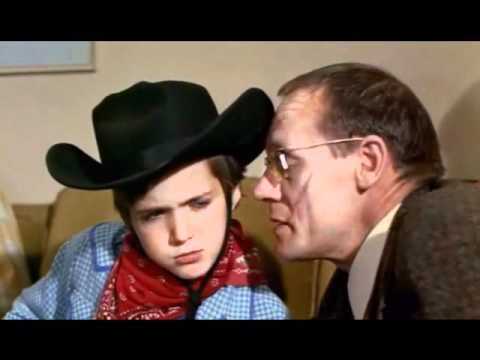
Creating the modern Indie Rock aesthetic.
How do you go about creating a masterpiece? Joe Boyd regarded at least seven of the songs from the Jim Hawkings’ demo as ‘very good’ to ‘great’ even in their raw form. Of the rest, there was some potential, but they would need some work. Also, he was aware of a few other tracks floating around the R.E.M. stratosphere. Several songs that ended up on the IRS compilation album Dead Letter Office (released in April of 1987) were available to Boyd. This included “Ages of You”, “Burning Hell,” and “Burning Down”. There were also a couple of songs (“Hyena” and “Windout”) that were recorded during a trip to the UK on November 21, 1984, at Rock City nightclub in Nottingham that Boyd could consider, but first, there was one song from the Hawkings’ demo that, although not exactly a very good or great song, had captured Boyd’s attention. It was “Wendell Gee”. Peter Buck flat-out didn’t like the song. It was mainly written and performed by Mike Mills, who was the secondary vocalist and bass player for R.E.M. In most bands, a bass player/backup singer would not have much say in… well, in anything. In fact, they would have to expend a healthy amount of energy and frustration in trying to get his/her contributions into any song. But R.E.M prided itself on its socialistic approach to the band. All members received equal songwriting credit, all members got equal say. So, while going through their material at Livingston Studio, Boyd brought up “Wendell Gee” and asked the band to give it a go. Buck dutifully participated, but his lack of enthusiasm for the song was obvious. Even listening to the demo version they recorded at Jim Hawkins Studio, it seemed like he was just going through the motions on his guitar part. Boyd was experienced and perceptive enough to instinctively understand band dynamics and he came up with a brilliant move.

Boyd had an infinity for obscure folk instruments, as witnessed by the cover of the Incredible String Band’s first album, which displays the band members in Boyd’s London office circa 1966, surrounded by every kind of old, weird American instrument you could imagine (from kazoos and tin whistles to mandolins and fiddles). Noticing Peter Buck’s passive semi-participation in the session for “Wendell Gee”, Boyd reached for a banjo he had on hand and gave it to Buck. Within minutes, Buck was engulfed with the unfamiliar instrument and was putting together the banjo part that would be introduced about halfway through “Wendell Gee”. This banjo part ended up providing the exact energy and strange little moment the song needed, giving it a lift right into the soaring counterpoint harmonies between Mills and Stipes as they were waltzing their way into a build-up that leads to the song’s poignant, heart worn conclusion. Additionally, underneath it all, Boyd introduced another old, weird American staple, the violin. Barely audible at first, this melancholic violin part subtly crested over and receded under the harmonies and instrumentation like a small hypnotic wave. The dance between the violin and Stipes/Mills’ vocals waltzes until the vocals reach for their final gasp, as it gives way to the violins creaking halt like a model-T with worn brakes, thus providing the final tortured moment of the song (and album). And giving Fables its perfect ending.
Fables is filled with brilliant jarring sonic moments like the ending of “Wendell Gee” that pierce through the conscious hum of the listening experience. And it is filled with moments like Buck’s banjo part — moments that cause momentum changes out of nowhere, moments that create a unique pulse that give a sensation similar to that of traveling (traveling by train especially). These moments would shape and punctuate the feel and theme of Fables throughout the entire listening experience. Moments where the drums seem to be lagging behind a half beat, trying to catch up with the melody or the guitars, only to actually overrun them and force them to catch up. There are other moments when the instruments halt, and all goes quiet save for a lone vocal by Stipes or a haunting guitar riff by Buck, only to start again and carry the momentum on even further, with new energy, deeper into the crux of the song’s vibe. These sonic moments create the kinds of interruptions, uncertainty and curiosity of what is to come next — the sensations associated with travel, and the unique enlightenment that one experiences during travel. And all these little delays and push forwards are totally grounded in that deep, thick murky goo that R.E.M inhabits and that serves as the locomotive for Fables.
Forming the perfect threesome with R.E.M’s musical goo and Boyd’s production is Stipe’s lyrics which galvanize the sonic vibe into the emotive themes that take the entire listening experience to another level that is central to the modern Indie Rock aesthetic. The first clue that there’s something strange going on in the literature of Fables, is actually in the title itself. Or the two titles: Fable of the Reconstruction and Reconstruction of the Fables. The band refused to decide on which of these titles to use, so they used both (the record label chose Fables of the Reconstruction — although both titles are on the album). So the listener is left wandering, well which one is it? Is this album about fables of Reconstruction? Or is it about reconstructing Fables? Then, if the title wasn’t enough of a hint that, your perceptions are going to be challenged, Stipes warns us on “Feeling Gravitys Pull”, the very first song on the album, by singing “Time and distance are out of place here.” This lyric could have been another one of Stipes’ impressionistic lines like those on R.E.M’s previous albums, but instead, this time, Stipes uses the lyric to set a theme that is at the very core of Fables’. By declaring that time and space are out of place here in “Feeling Gravity’s Pull,” Stipes is announcing that a change is being made — which is basically the definition of what the word “Reconstruction” means. A changing from the old ways, a changing of minds. In this light, the title could be a metaphor for the changes going on in Stipes’ mind, or R.E.M’s consciousness in general, the transitions they are making in their career, or even the changes happening in the recording industry in general.

But these lyrics denote a larger context as well. Stipes, a student of history, was an army brat who traveled a lot as a kid, and he traveled a lot with R.E.M. He was piecing together lyrics in notebooks in the weeks leading up to the recording sessions for Fables, often seen scribbling things down while traveling. Certainly, these lyrics could be part of the process of him figuring out his own mind, but what we see running through Fables is that Stipes has conformed his thoughts and emotions from these notebooks into the lyrics that form a narrative that runs throughout Fables. This narrative approach to his lyrics represented a huge departure from his previous approach to lyrics. Stipes explained that prior to Fables: “I felt I had gone as far as I could with stream-of-consciousness writing, and I needed to write about something real or something narrative.”
The result was that Stipes’ lyrics created a narrative that explored literary themes and motifs that basically revolved around travel, trains, rural spaces/small towns, local outsiders, southern dialect, etc. One of the strengths of the lyrics is that Stipes feasts on quirky details that seem as though they have been pulled from real-life yet impressionistic travel stories that specifically chronicle the rarely seen, outsider settings and happenings of rural, South United States. As reviewer Matthew Perpetua described, the songs are “preoccupied with the behavior of mysterious older men” as they imagine “the inner lives of outsiders and recluses.” The details, as well as the dialectic phrasings that Stipes include, work in a strange way with the sonic goo that is going on. They do so in a way that Perptua described as evoking “images of railroads, small towns, eccentric locals… and a vague sense of time slowing to a crawl.”

The manner in which Stipes organizes and delivers these lyrics creates the telling of a journey. A journey that begins with the falling-into-a-dream abrasive tug of “Feeling Gravitys Pull” and ends with the melancholy wake-up of “Wendell Gee” — a song that was based on a dream, but whose central character is the sad personification of the South and Southern ways. Stipes, as narrator, as an all-seeing travel guide and carny barker, takes his fellow travelers on this dream-like tour to obscure, not-often-seen rural places of the southern United States: a journey over the terrain that Rock critic Greil Marcus referred to as the Old, Weird America. Be prepared to expand your perspective and even possibly switch your total consciousness, Stipes seems to warn.
How Stipes achieves this task as tour guide, is that he deploys a couple of inventive literary techniques which firmly place the listener into the mind space of the Southern United States. One technique he uses is to reference real-life people, real-life places and real-life situations. In “Driver 8” Stipes references the railway (the Southern Crescent) as he sings of a train conductor that has conversations with the front wheels of his locomotive. In “Life and How to Live It” Stipes introduces us to Georgia native and Independent writer Brivs Mekis. who built “two doors to go between the wall” of his house (Mekis had two different styled houses built within the same house so that he could switch to a separate home whenever his mood changed). In “Old Man Kensey” Stipes sings of a local prankster who kidnaps dogs. In “Maps and Legends” he sings of outsider artist and Baptist preacher Howard Finster who paints maps that don’t seem real. Stipes references a real life place (Philomath) in “Can’t Get Here From There” and he references a real life comet in “Kohoutek”. The result of having so many real life people and places is that the lyrics conjure the massive, foreboding, ominous reality of the South. To expand on that, Stipes punctuates his descriptions of southern characters and places and situations with dialect that is representative of outsider Southern U.S. culture. In “Good Advices” he says things like “when you greet a stranger, look at his shoes”. The title phrase of “Cant get there from here” is another sharp example, as is “selling truth on the Go Tell crusade” phrase from “Driver 8”. Stipes lyrics and phrases uniquely conjure the invisible, dark ominous, cloud that the U.S. Civil War and subsequent Reconstruction cast over the South for the previous century. As Stipes guides us on this dream-like journey, there is no escaping this dark cloud — it is an undercurrent in the gestures and words of the odd assortment of characters and outsider personalities, and we see it in the abstract manner in which they have eaked out an existence and created their own way life under this long dark shadow.
 Howard Finster
Howard FinsterIn the end, after listening to Fables you feel like you have been on a journey. The way R.E.M was able to yoke a sonic atmosphere and lyrical themes into a cohesive, emotive piece created an aesthetic that became the blueprint for countless other Indie Rock bands to follow over the next four decades (think Modest Mouse’s The Lonesome Crowded West, Neutral Milk Hotel’s In the Aeoplane over the Sea, Arcade Fire’s The Suburbs, etc). At a time when corporations had nearly completely taken over Rock music and covered it in a plastic digital sheen, Fables became a light in the darkness. A spark that provided the example of what Indie Rock could be and should be. It is the proof that albums can be much more than just a collection of songs to dance to. It shows that albums can be holistic artistic explorations into emotions, thoughts, memories, values. This aesthetic that Fables presented, right during the ugly, dark era of corporate rocks take over, lives on today and still exists in the best examples of Indie Rock albums of the 21st century.
* Part of R.E.M’s loyalty to analog recording can be traced back to Jim Hawkings’ Studio in Athens. That studio was actually the fulfillment of a dream that soul man Otis Redding shared with his good friend and backing musician Jim Hawkins shortly before Redding lost his life in a plane crash. It took Hawkings more than a decade to fulfill this dream of creating the kind of studio that he and Otis dreamed of, but when he did, R.E.M. was the first band to record there. It was still their go-to studio when they laid down the 14 tracks destined for Fables.
[image error]February 8, 2023
the Forgotten Outsider Music Boom of the 1980s
The terms ‘Outsider music’ or ‘Outsider Rock’ were not in common use until the middle part of the 1980s when the genre catapulted its way into cult popularity status through the work of three distinct musicians: Jandek, Daniel Johnston, and Charles Manson (Yes, that Charles Manson).
Jandek, the Unabomber of Outsider music, began to make his mark in 1986 when several late-night radio shows in New York coordinated a “Jandek Across America” event in which nothing but Jandek was played from 1 pm to 2 pm on each of those stations. Meanwhile, Outsider poster boy Daniel Johnston (the artist that has blessed us with such poignant lyrics as: ‘don’t play cards with the devil cuz he’ll deal you a hand that’s awful’) reached the national consciousness after being featured on Mtv’s Cutting Edge (a 1985 profile of the Austin Texas music scene). At that same time, Charlie Manson’s early recordings were faring well thanks in part to the 60’s Rock Renaissance that had become so huge in the mid-1980s*.
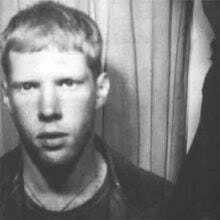
Also cropping up from the thrift store dustbins at that time were several other Outsider-ish recordings from the 1960’s. This included Rock musicians like Brian Wilson, Syd Barrett, Roky Erickson, Skip Spence, R. Stevie Moore along with two Frank Zappa finds; Captain Beefheart and Wildman Larry Fischer (whose 1986 duet with Rosemary Clooney called “It’s a hard business” became an instant Outsider anthem). As these artists’ records were finding their ways to college radio station turn tables in greater degrees than ever before, it was the Shaggs’ Philosophy of the World that really set the stage for Outsider Rock’s emergence.
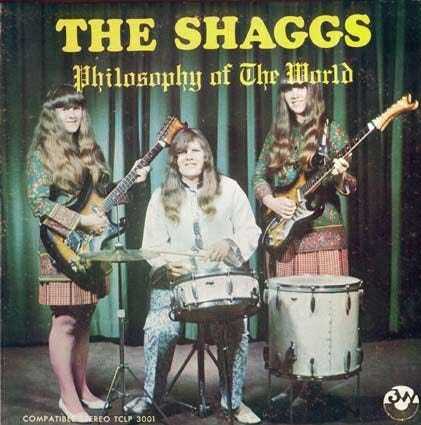
The Shaggs were made up of four sisters from Fremont, New Hampshire who were managed by their (some claim abusive) father, Austin Wiggen after he was informed by a local soothsayer that his daughters should start a successful rock band. This led to an investment in recording, Philosophy of the World — their iconic album which initially sold less than 100 copies upon its release in 1969. Seven years later however, when the album was name-checked by Frank Zappa in a 1976 Playboy poll, it was suddenly put on the Rock map. Eventually, so much demand for the album built that it was re-released — this time by Red Rooster/Rounder (in 1980 as an LP and then on CD in 1988). The LP was so well received at that time that it inspired Rolling Stone magazine to name the Shaggs as the “Comeback band of the Year” and has since been the benchmark of the unpretentiousness, the honesty, and authentic, naïve, childlike qualities that have come to define Outsider Music.
But to pin down an exact definition of Outsider Music is like trying to take a bottle of ketchup and turning it into a tomato. If you define it as music that is outside the mainstream music industry, then that includes anything from punk to polka. If you define it as music that is recorded not for popular consumption, then that too is not exactly correct, since Outsider musicians often dream (perhaps delusionally) of mainstream success. If Outsider music is defined in relation to Outsider Art, then it has to be put in the context of music that is created by folks who are mentally imbalanced (for that is what Outsider Art was originally meant to define: the artwork made by mental home patients). Jack Mudurian, whose musical repertoire was recorded in 1981 by the Activities Director at the Nursing Home where he was a resident, would be a classic example of this definition. But not all Outsider musicians are mental patients. Some seem more like novelty acts, but at the same time, it is also wrong to define Outsider musicians as simply novelty acts because Outsider musicians are not necessarily “in” on the joke, so to speak. The only undeniable unifying aspect of Outsider music is its genuine expression of feelings, ideas, emotions, etc., that can’t be effectively expressed otherwise. Sometimes — oftentimes even, these ideas, emotions, etc., come from the most demented reaches of the brain.

By the early 1990s, Kurt Cobain was constantly being seen on magazine covers wearing t-shirts designed by Daniel Johnston and thus helped signal the mainstream acceptance of Outsider music. Suddenly, the consumer culture thought it was cool. By that time, Indie Rock (or Alternative Rock if you will) was becoming just another sprocket in the music industry machinery instead of the cog it had once promised to be — and in a smaller version of that process, it wouldn’t take the music industry long to attempt to manipulate Outsider music into a similarly neatly packaged and commoditized consumer niche as well. One blatant example of this was when one The Shagg’s song “My pal Foot Foot” (which is about a lost cat) became the inspiration — along with outsider Tangela Tricoli’s “Stinky Poodle” — for the song “Smelly Cat” that was sung by a character portraying an outsider musician on the number 1 rated tv sitcom of the time, Friends. To Outsider music aficionados, this act was not only very representational of how the mainstream belittles Outsider music instead of celebrating it, but it was also a clear signal that the corporate music industry was processing Outsider music into its fold.
Two of the biggest names in Outsider music during this process of being conformed into the mainstream were Chicago native Wesley Willis (the Tiny Tim of the 90s) and B.J. Snowden, a laid-off music teacher whose 1989 demo tape (released in 1996 by the DeMilo label as Life in the USA and Canada) is considered a classic of the Outsider genre. Other than the fact that Willis and Snowden are both African-American and that both of them would have never been discovered if Cobain hadn’t made Outsider music cool, Willis and Snowden seem to be exact opposites. Willis, who commonly peppers his speech with profanity, has several twitchy physical gestures that may have been the residue of child abuse he withstood from his parents. He became homeless at a young age, wandering the streets of Chicago, scrounging for loose change wherever he could find it, and is basically considered to be one sandwich short of a picnic. Snowden, on the other hand, lives peacefully with her mother and her son, has a degree in music, was under long-time employment throughout the 90s, and wouldn’t utter a curse word if you pounded her big toe with an oversized hammer. Willis’s music is considered Outsider Music because it seems to be created by a madman. Snowden’s music, on the other hand, seems to be created by a very happy, caring, forgiving woman. The music of both artists seems to be off somehow, although neither musician notices it one bit. In Snowden’s case, that is part of the charm, while in Willis’s case, it is part of the humor. This dichotomy would suggest that the unifying equation in modern Outsider music, then, is simply that the music must kind of suck in terms of the technical aspect or at least be almost childlike in the fact that it appears to be unconscious or uncaring in regards to musical convention and etiquette.
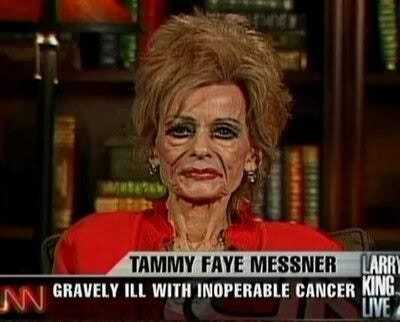
In the mid-Naughties (the 2000s), the age of MySpace Rock and ProTool Cowboys gave rise to any number of pimply-faced Middle-class teenagers and lovelorn office workers in America, for suddenly they all had the ability to cast their musical ambitions to hundreds and thousands of listeners the world over — all at the click of a mouse. Outsider music became more accessible than ever, which actually caused even more of a problem in terms of defining it. Outsider music for a short minute, becomes a part of the Industry. MySpace pages for the Beatles or the Stones were just as accessible as the MySpace page for Joe the Drummer or Tammy Faye Bakker — and the gulf between Outsider and Insider was shrinking every day. By the late Noughties, MySpace lost steam and was replaced by various corporate-sponsored and spam-regulating social media platforms — which meant an ugly death for any chance that Outsider music had for garnering any mainstream acceptance. Instead, Outsider music was quickly relegated back to the underground — where it belongs.
— -
*For example Sonic Youth’s “Death Valley 69” off of their 1984 Bad Moon Rising LP expresses their intrigue regarding Manson, while their cohort Lydia Lunch had this to say about Uncle Charlie: “You could not not love Charlie…You could not not love what he stood for. Yes, it’s got to come down. Yes, this was injustice. The guy’s a brilliant spoken-word artist.”
December 1, 2022
just how much did the Stones rip off the Beatles?
just how much did the Stones rip off the Beatles?
By November of 1963, the Beatles had already conquered jolly ole England and were starting to have their songs played on American radio. Meanwhile, the Rolling Stones weren’t even able to get their songs played on radios in their own homeland. Until… one day the Stones manager (Andrew Loog Oldham — who had previously worked for the Beatles) ran into John Lennon and Paul McCartney on the streets of London. Oldham explained how badly the Stones needed a top 20 hit to crack the British airwaves. Since the Beatles were the ones who directed Oldham to the Stones in the first place, John and Paul felt bad for him. So Lennon and McCartney told Oldham they would meet the Stones at a recording session at De Lane Lea Studio, and help them out. When Lennon and McCartney arrived shortly afterward, they quickly put together a song called “I wanna be your man” and gave it to the Stones to record. Within days the Rolling Stones had gone from just another struggling local Rock and Roll group to a nationally known band with a #12 hit. The Stones would become very accustomed to riding on the coat tails of the Beatles.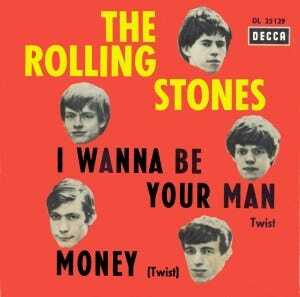
It started when the Stones signed with Decca Records. Decca had taken a lot of flak for previously passing on the Beatles and they were eager to save face (and to start fighting for a share of the new young record buying market that the Beatles ruled supreme over). So they signed the Stones as a Beatles replacement. This gave Oldham an idea. He was smart enough to realize that no band could compete with the Beatles, so he devised a brilliant plan that would get the Stones mentioned alongside the Beatles as much as possible. The plan was to market the Stones as the anti-Beatles. Whereas the Beatles manager Brian Epstein went to great lengths to clean the Beatles up and make them respectable, Oldham would do just the opposite with the Stones. He would take this group of middle-class kids and dress them down to look tough, dangerous, sloppy, raunchy. Soon, with Oldham’s encouragement, press releases were asking the question: “Would you let a Rolling Stone date your daughter”.
Oldham also encouraged the Stones Keith Richards and Mick Jagger to follow in Lennon and McCartney’s footsteps by writing their OWN material. But that soon proved to be a skill that did come as easy to them as it had to Lennon-McCartney, so they continued to record songs written by others — usually American blues artists. Still though, in 1964, after the Beatles conquered America and the British Invasion was in full swing, the Stones continued to follow in the Beatles footsteps and headed to the US for a tour that included a number of TV appearances along the way. The results were a disaster and after just a couple weeks the Stones limped back to their homeland, publicly mocked by lounge singer Dean Martin and upstaged by the Godfather of Soul James Brown.
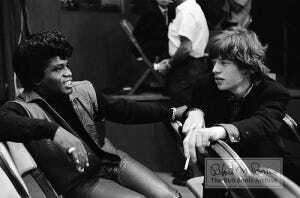
The Stones were down, but not out — for, while in the U.S.A, they had visited Chess records in Chicago and met with the legendary Muddy Waters. This proved to be a transformational experience. The Stones recorded their next album there at Chess and everything changed for them from that point on. For the next two years the Stones went on a streak of hit records that rivaled the Beatles. And it was at that point that a fabricated Beatles-Stones rivalry became common fodder for Rock audiences all over the world.
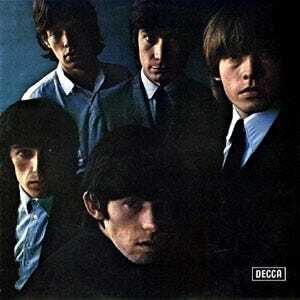
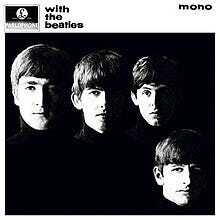

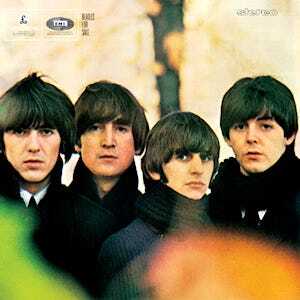
The stones played this rivalry for all they could get, particularly in their album cover art. The first album cover that the Stones emulated the Beatles on was Rolling Stones №2 which looked suspiciously similar to With the Beatles. This may have been a coincidence, but then the Stones put out Between the Buttons, with an album cover of them standing in the woods, wearing dark overcoats and with portions of the photo out of focus — which was amazingly similar to the Beatles For Sale which came out over a year earlier.
Certainly the Beatles were aware of the Stones copycatting them by this point, for on the cover of their next album — the historic Sgt. Pepper’s Lonely Hearts Club Band — the the Beatles included a small sign that read “Welcome The Rolling Stones” — as if the Beatles knew the Stones were going to rip them off on this album as well.
And rip them off they did! Sgt. Pepper’s Lonely Hearts Club band was an album that re-defined the Rock landscape and was so in tune with the psychedelic sound of the time that it struck a chord with a generation of new music critics and fans alike that has never really been witnessed since. It was so huge and influential that everything in its wake was in its shadow. So when the Stones were ready to make their next album they decided to stick with their formula of being the anti-Beatles. Not only did they fill their next album with psychedelic songs, but they hired Michael Cooper (the artist who photographed Sgt. Pepper cover art) to create a 3D photo for their own album — which they titled Their Satanic Majesties Request. The result was a cover that ripped off the covers of both of the Beatles 1967 releases; Sgt. Pepper and Magical Mystery Tour. The rip off was so complete that the Stones actually had Cooper hide images of the Beatles faces in the flowers on the cover!

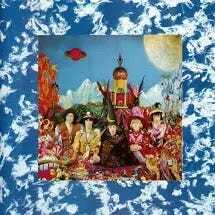
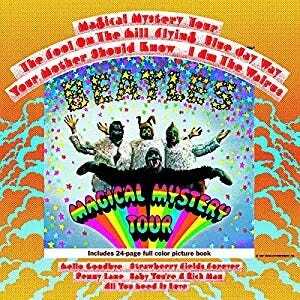
Their Satanic Majesties Request was not as well-received as Sgt. Peppers Lonely Hearts Club Band, but that did not stop the Stones from continuing to copycat the Beatles. In 1968, the Beatles released their eclectic self-titled album, commonly referred to as the White Album. The White Album mixed folk, music hall, pop, blues, rock, experimental sound collage, and even a country-flavored tune or two into a double album. The Stones followed later in the year with their own eclectic offering of county and blues songs, Beggar’s Banquet. Most striking however, was how the Stones, once again, copied the Beatles cover art for the album:
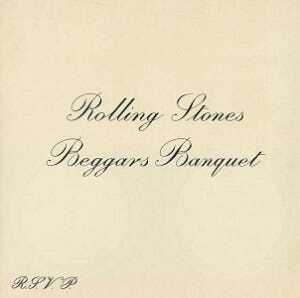
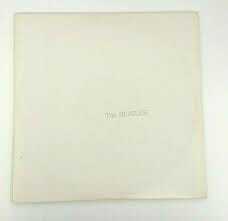
But the Stones didn’t stop there. Next, still trying to ride on the Beatles coat tails, the Stones began plans to shoot an ad hoc film called The Rolling Stones Rock and Roll Circus with hopes of having it air on the BBC. Filming came exactly one year after the BBC aired a Beatles ad hoc film titled The Magical Mystery Tour.
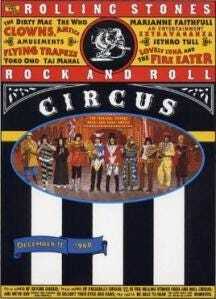

Interestingly enough, Beatle John Lennon even directly participated in this copycat endeavor by fronting and performing with a one-off supergroup called the Dirty Mac with the Stones Keith Richards on guitar. Dirty Mac performed the Lennon song “Yer Blues” which he had previously recorded with the Beatles for The White Album. Lennon’s participation in the Rock and Roll Circus seems to hint that the Beatles took the the Stones imitating them all in good fun. The Stones and Beatles were good friends after all. Still though, the Stones imitating the Beatles became so blatant by 1969 that Lennon decided to call them out for it in his song “Dig A Pony” when he sings:
I roll a stoney.
Well you can imitate everyone you know.
Yes, you can imitate everyone you know.
I told you so!
This did not deter the Stones however. One month after the filming of The Rolling Stones Rock and Roll Circus, the Beatles recorded the song “Let it Be” which also eventually became the title of the album they were recording. The Stones’ founder Brian Jones played saxophone on the B-side of “Let it Be”. And in December of 1969, the Stones followed “Let it Be” with their song “Let it Bleed” which also became the title of their next album.
Would the copycatting ever cease? In 1970 it seemed as though it would, for the Beatles famously broke up and there would be nothing new for the Rolling Stones to copy cat from then on. But lo and behold, what did the Stones do after that? Trying to make a comeback in the later 1970’s, the Stones fittingly made them selves up to look like whores for their album cover for Some Girls and dug into the past to copycat the Beatles’ A Hard Day’s Night:
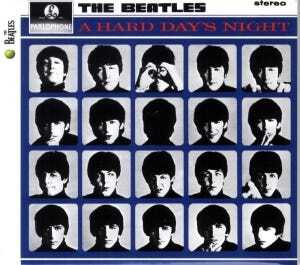
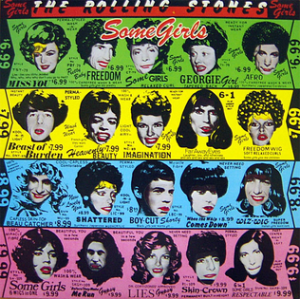
It’s hard to believe that all this copycatting could just be a coincidence. It is easier to believe that the Stones deliberately “ripped off” the Beatles — perhaps as a joke. Everyone said the Stones were the anti-Beatles or were riding on the Beatles coat tails, so why shouldn’t the Stones have some fun and go over board with it? Sorta like when John Lennon wrote the lyrics for “Glass Onion”. Lennon was making fun of the media for reading too much into his lyrics. Maybe the Stones were making fun of the media for reading too much into the Beatles-Stones rivalry.
[image error]who will save rock n roll?
- Ed Wagemann's profile
- 67 followers



